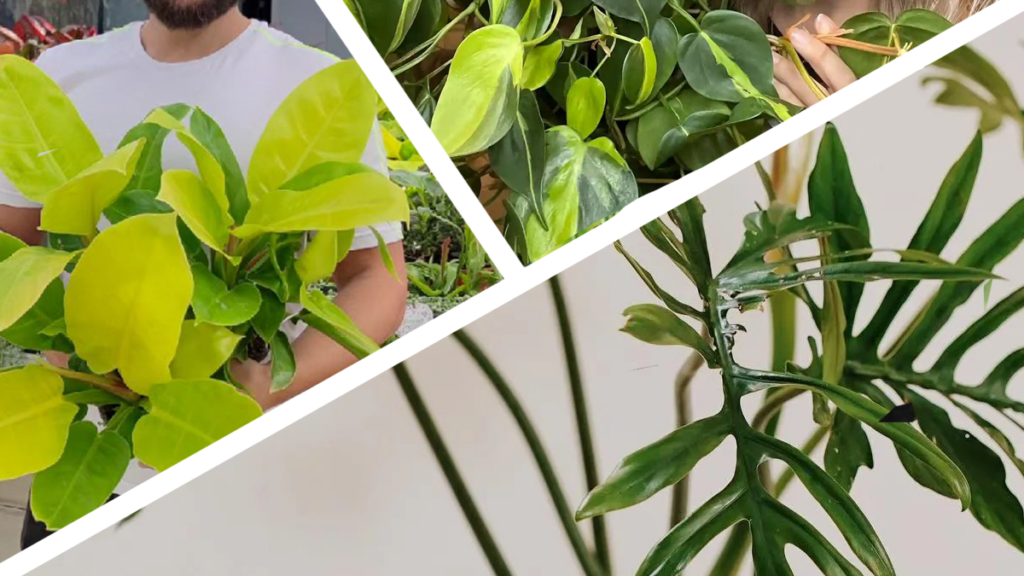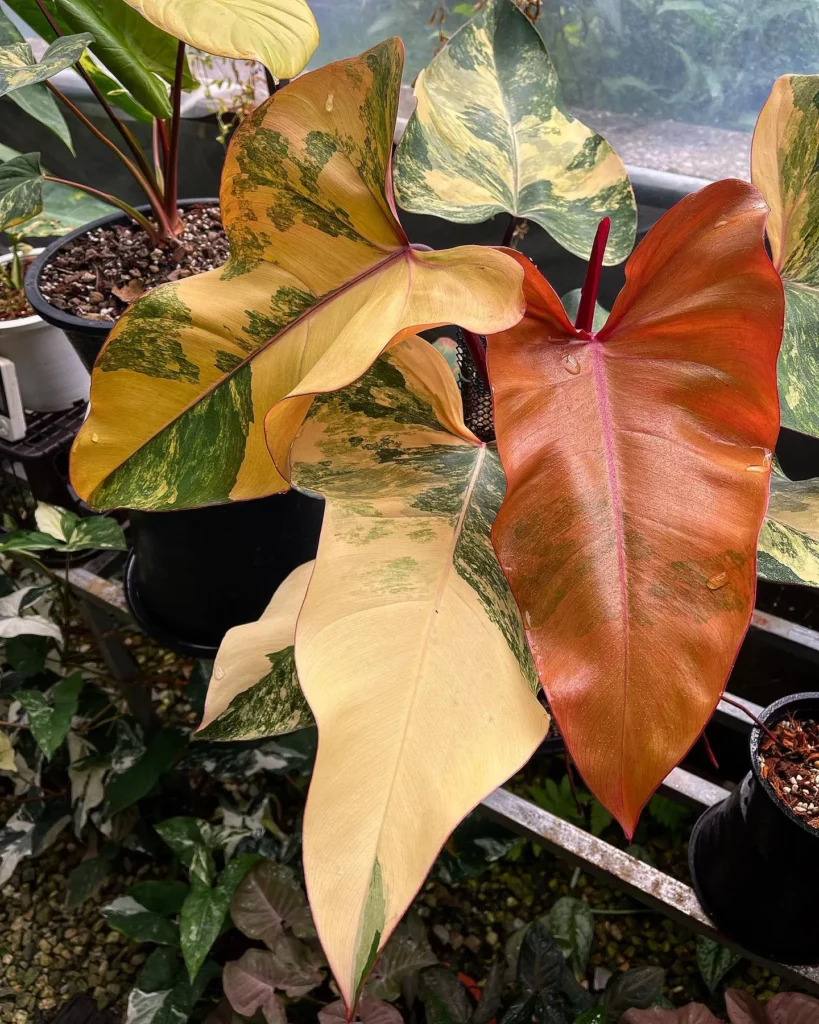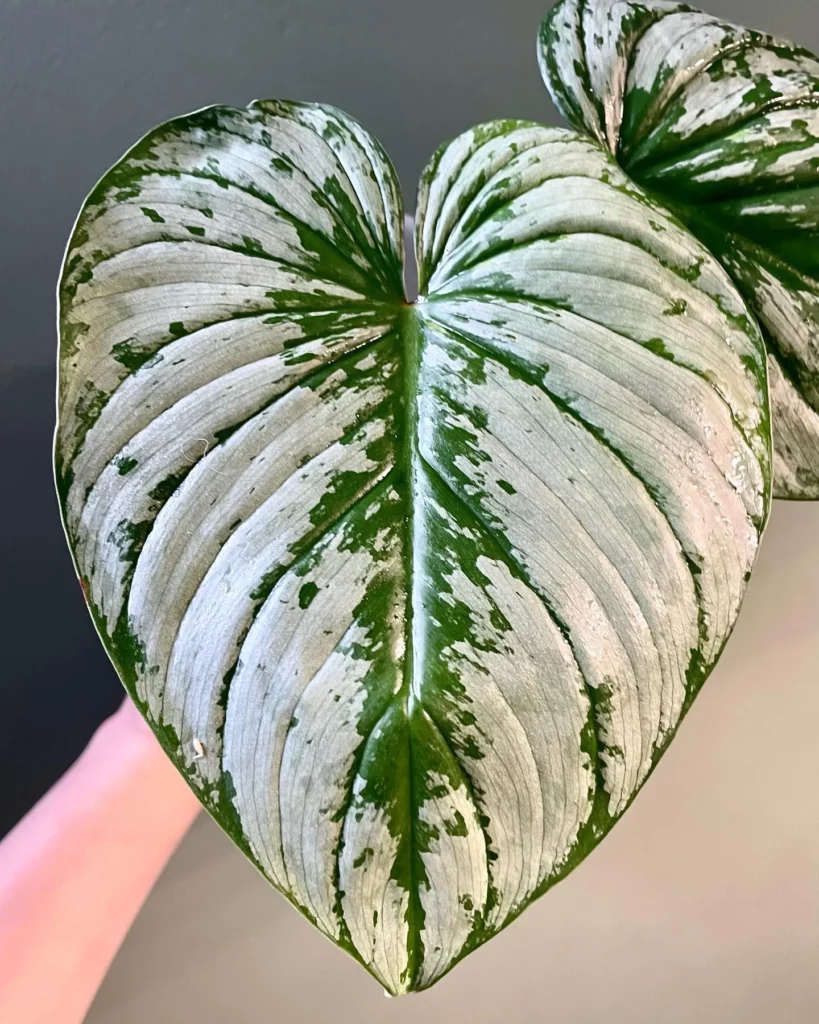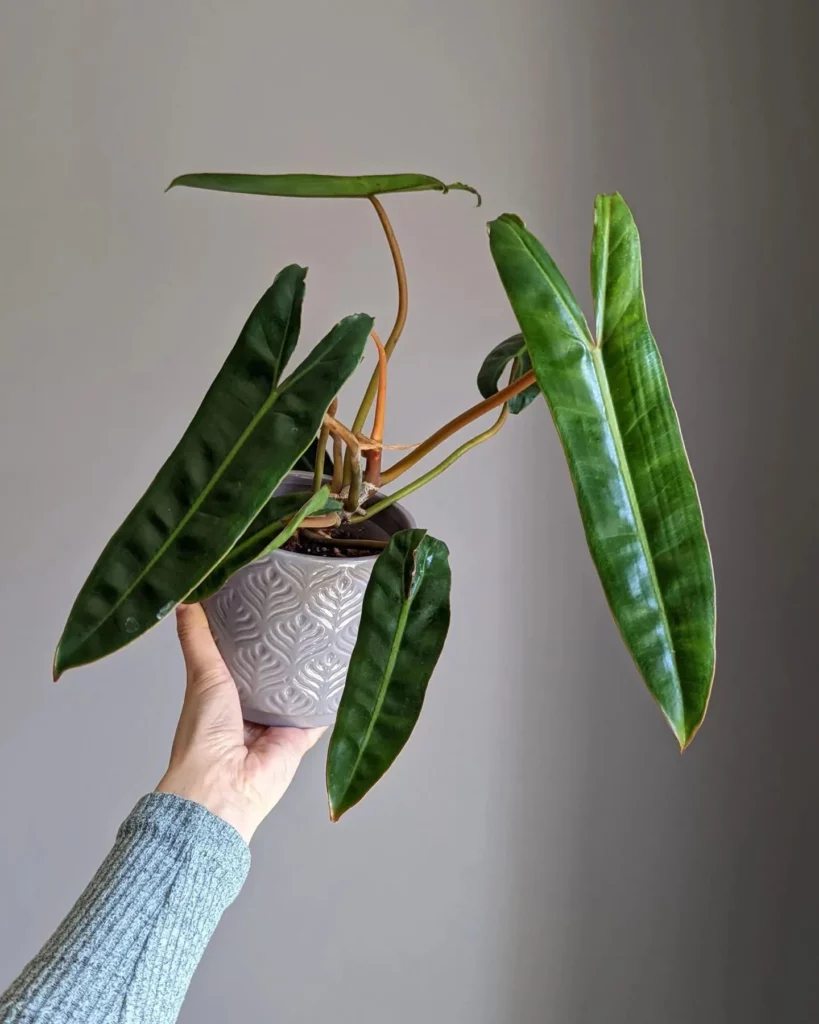Welcome to my comprehensive growing guide for Philodendron Verrucosum! As an expert in plant care, I’m here to provide you with all the essential tips and advice you need to successfully nurture this beautiful houseplant. Philodendron Verrucosum, with its heart-shaped velvety leaves, is a popular choice among plant enthusiasts.
Key Takeaways:
- Philodendron Verrucosum is a popular houseplant with heart-shaped velvety leaves.
- It thrives in moderate, indirect light and can tolerate lower light conditions.
Understanding the Appearance of Philodendron Verrucosum



Philodendron Verrucosum is a stunning houseplant that showcases distinctive features. Its large heart-shaped leaves, with a velvety texture, are a standout attribute. The leaves have bright neon-green veining that creates a striking contrast against the deep green hue of the foliage. A closer look reveals a crimson underside, adding further visual interest.
As the plant matures, the leaves deepen in color, enhancing the overall aesthetic appeal.
When it comes to Philodendron Verrucosum, appearance matters. The vibrant neon-green veining against the lush green leaves gives this houseplant an eye-catching allure. Its heart-shaped leaves and velvety texture make it a popular choice for plant enthusiasts looking to add a touch of elegance to their indoor spaces.
The crimson underside adds a touch of drama and visual interest, making the plant even more captivating. With its stunning appearance, Philodendron Verrucosum is sure to become a focal point in any home or office.
The distinct appearance of Philodendron Verrucosum sets it apart from other houseplants. Its large heart-shaped leaves are not only visually appealing but also provide a sense of warmth and coziness to any space. The velvety texture adds a tactile element, inviting you to reach out and feel the leaves.
No products found.
Meeting the Light Requirements of Philodendron Verrucosum


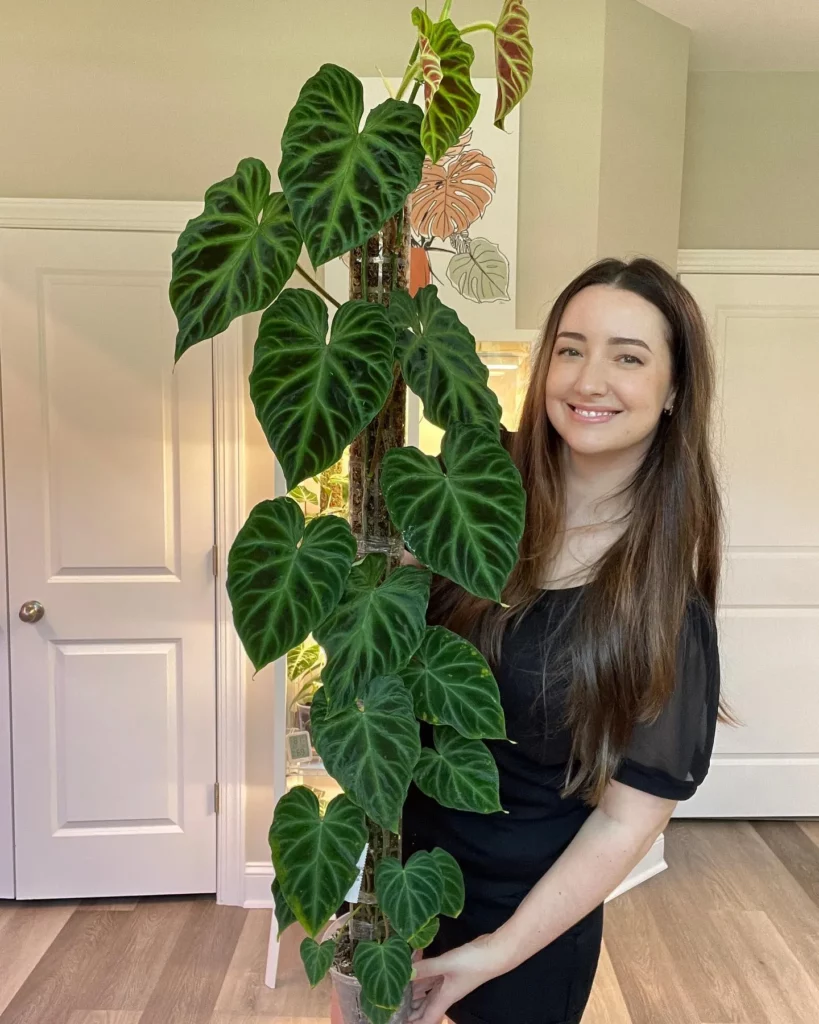
Proper lighting is crucial for the healthy growth of Philodendron Verrucosum. As a low light-tolerant plant, it thrives in moderate, indirect light. Bright, filtered sunlight is also acceptable, but direct sunlight should be avoided as it can scorch the leaves. Placing the plant near an east-facing window or providing bright, indirect light will promote optimal growth and vibrant foliage.
It’s important to note that insufficient light can lead to leggy growth and pale foliage, while excessive light can cause leaf burn. Finding the right balance is key.
If your Philodendron Verrucosum starts stretching towards the light or its leaves lose their vibrant color, it may be an indication that it needs more light. On the other hand, if the leaves turn yellow or develop brown spots, it may be getting too much light.
Indoor Lighting Tips for Philodendron Verrucosum:
- Place the plant near an east-facing window to ensure it receives bright, indirect light.
- If natural light is limited, you can supplement with artificial grow lights. Opt for full-spectrum fluorescent or LED lights, positioning them about 12 inches above the plant.
- Avoid placing the plant in areas with direct sunlight, especially during the hottest parts of the day.
Ensuring Proper Watering for Philodendron Verrucosum



Proper watering is essential for the health and well-being of your Philodendron Verrucosum. This tropical plant loves moisture but can be susceptible to root rot if overwatered. To ensure the right balance, water your Philodendron Verrucosum when the top 2 inches of soil feel dry to the touch. This allows the plant to take in the necessary moisture without sitting in stagnant water.
When watering, it’s important to ensure proper drainage to prevent waterlogging. If your plant is in a pot with drainage holes, simply water until you see water coming out of the bottom. If your pot doesn’t have drainage holes, be sure to use a well-draining potting mix to prevent excess water buildup. Adjust your watering frequency based on environmental conditions and the moisture needs of your plant.
Fertilizing Philodendron Verrucosum for Optimal Growth



Fertilizing your Philodendron Verrucosum is essential for promoting optimal growth and ensuring vibrant foliage. By providing the right nutrients, you can help your plant thrive and reach its full potential. Here are some key tips to consider when fertilizing your Philodendron Verrucosum:
- Choose a slow-release fertilizer formulated specifically for houseplants. This type of fertilizer gradually releases nutrients over time, providing a steady supply for your plant’s needs.
- Follow the instructions on the fertilizer package for the correct dosage and application method. Over-fertilizing can harm your plant, so it’s important to use the recommended amount.
- Fertilize your Philodendron Verrucosum during the growing season, typically from spring to summer. This is when the plant is actively growing and will benefit the most from additional nutrients.
- If your Philodendron Verrucosum has been in the same pot for more than a year, consider fertilizing more frequently. Over time, the nutrients in the soil can become depleted, and regular fertilization can help replenish them.
Signs of Over-Fertilization
While fertilizing is important, it’s equally crucial to avoid over-fertilization. Here are some signs that your Philodendron Verrucosum may be receiving too much fertilizer:
- Burned or yellowing leaf tips
- Wilting or drooping leaves, even when the soil is moist
- Excessive foliage growth with smaller leaves than usual
- Build-up of fertilizer salts on the soil surface
If you notice any of these signs, it’s best to flush the soil with water to remove any excess fertilizer and adjust your fertilization routine as needed. Remember, it’s better to slightly under-fertilize than to over-fertilize.
Potting Philodendron Verrucosum for Healthy Growth



Proper potting is crucial for the healthy growth of Philodendron Verrucosum. When the roots start to outgrow their current container or show signs of stunted growth, it’s time to repot the plant. Choose a pot that is slightly larger than the current one to allow room for the roots to expand.
Steps for Potting Philodendron Verrucosum:
- Select a well-draining potting mix specifically designed for houseplants. This will ensure proper moisture retention while allowing excess water to drain away, preventing waterlogged roots.
- Gently remove the plant from its current pot, being careful not to damage the roots. If the roots are tightly packed, you can gently loosen them to promote healthy growth.
- Place a layer of fresh potting mix in the bottom of the new pot and position the plant on top. Fill in the remaining space with more potting mix, ensuring that the plant is at the same level as before.
- Lightly tamp down the soil to remove any air pockets and provide stability for the plant. Water the newly potted Philodendron Verrucosum thoroughly, allowing the excess water to drain away.
Propagating Philodendron Verrucosum for New Plants



Propagating Philodendron Verrucosum is an exciting way to expand your plant collection. There are two effective methods for propagating this beautiful plant: stem cuttings and air layering.
Taking Stem Cuttings
Stem cuttings are the easiest and most common method of propagating Philodendron Verrucosum.
- To start, select a healthy stem with at least one node and a few leaves.
- Using a sharp, clean knife or pair of scissors, make a clean cut just below a node.
- Dip the cut end in rooting hormone to promote root development.
- Next, place the cutting in water or moist sphagnum moss.
- Ensure that at least one node is submerged or in contact with the moist medium.
- Keep the cutting in a warm location with indirect light, and mist the leaves regularly to maintain humidity.
- After a few weeks, roots will start to develop.
- Once the roots are well-established, transfer the cutting to its own pot filled with well-draining soil.
Air Layering
Air layering is another method that can be used to propagate Philodendron Verrucosum. This technique involves encouraging root growth on a stem while it is still attached to the parent plant.
- Select a healthy stem and make a small incision just below a node.
- Insert a toothpick or a piece of wire into the incision to keep it open.
- Next, wrap a moist sphagnum moss around the incision and cover it with plastic wrap to create a sealed environment.
- Secure the plastic wrap with string or a twist tie.
- Over time, roots will grow into the moss.
- Once the roots are well-established, carefully cut the stem below the air layer and plant it in a separate pot.
Understanding the Growth and Development of Philodendron Verrucosum



Philodendron Verrucosum is an impressive houseplant with rapid growth and development. With proper care and attention, you can witness your Philodendron Verrucosum thrive and transform into a stunning addition to your indoor space.
Fast Growth and Height
Philodendron Verrucosum is known for its vigorous growth rate, allowing it to reach heights of up to 3 feet. As the plant matures, the leaves gradually deepen in color, adding to its beauty and charm.
Providing Ideal Conditions
To promote the growth and development of your Philodendron Verrucosum, it is essential to provide it with the right conditions. Adequate light exposure, moderate watering, and regular fertilization will ensure optimal growth. Furthermore, offering support in the form of a moss pole or trellis will guide its climbing nature and create an eye-catching display.
Promoting Healthy Foliage
Proper care practices, including providing bright, indirect light and ensuring well-draining soil, will contribute to lush and vibrant foliage. Regularly inspecting your Philodendron Verrucosum for any signs of pests and promptly addressing any infestations will help maintain its overall health and prevent any hindrance to its growth.
Managing Pests and Diseases for Philodendron Verrucosum



When it comes to caring for your Philodendron Verrucosum, it’s important to be aware of potential pests and diseases that can affect its health. Although this plant is generally resilient, it can still fall victim to common houseplant pests like spider mites, aphids, and mealybugs. Regular inspection of your plant’s foliage and stems will help you identify any signs of infestation early on.
If you notice any pests, it’s crucial to take prompt action to prevent them from spreading. There are several natural remedies you can try, such as wiping the leaves with a mild soap solution or using neem oil to deter pests. For more severe infestations, you may need to resort to chemical insecticides, but be sure to carefully follow the instructions and avoid overusing these products.
Philodendron Verrucosum can also be susceptible to fungal diseases, especially if the environment becomes overly moist or lacks proper airflow. To prevent issues like root rot, ensure your plant is not overwatered and that it is potted in well-draining soil. It’s also beneficial to provide good airflow around the plant by placing it in a well-ventilated area or using a fan.
By staying vigilant and taking preventive measures, you can keep your Philodendron Verrucosum healthy and thriving. Regularly inspecting your plant, maintaining proper watering practices, and providing adequate ventilation will go a long way in preventing pests and diseases from taking hold. With a little care and attention, your Philodendron Verrucosum will continue to impress with its stunning foliage.
FAQ
What is the appearance of Philodendron Verrucosum?
Philodendron Verrucosum has large heart-shaped leaves with a velvety texture. The leaves have bright neon-green veining and a crimson underside. As the plant matures, the leaves deepen in color, developing a deep green hue.
What are the light requirements for Philodendron Verrucosum?
Philodendron Verrucosum thrives in moderate, indirect light. It can tolerate lower light conditions and should be kept away from direct sunlight to avoid leaf scorch. Placing the plant in front of an east-facing window or providing bright, indirect light is ideal.
How should I water Philodendron Verrucosum?
Water Philodendron Verrucosum thoroughly when the top 2 inches of soil are dry. Ensure proper drainage and avoid allowing the plant to sit in stagnant water. Adjust watering frequency based on environmental conditions and the moisture needs of the plant.
How should I fertilize Philodendron Verrucosum?
Use a slow-release fertilizer formulated for houseplants. Apply according to the instructions, taking care not to over-fertilize. Fertilize during the growing season to promote lusher leaves, stronger stems, and overall improved plant health.
How should I pot Philodendron Verrucosum?
Repot only when necessary, such as when the roots start growing through the drainage holes or when the plant shows signs of stunted growth or yellowing leaves. Use a well-draining potting mix that retains moisture while allowing excess water to drain. Repot in the right potting mix during the growing season for healthy growth and to prevent root-related issues.
How can I propagate Philodendron Verrucosum?
Philodendron Verrucosum can be propagated through stem cuttings or air layering. Stem cuttings are the easiest method—choose a healthy stem with at least one node and a few leaves, dip the cut end in rooting hormone, and place it in water or moist sphagnum moss. Roots will develop, and the cutting can be transferred to its own pot. Air layering involves encouraging root growth on a stem before separating it from the parent plant.
How does Philodendron Verrucosum grow and develop?
Philodendron Verrucosum is a fast-growing plant that can reach heights of up to 3 feet. The leaves start off lighter in color and deepen as the plant matures. Providing proper care, including adequate light, watering, and fertilizing, will promote healthy growth and vibrant foliage.
How do I manage pests and diseases for Philodendron Verrucosum?
While Philodendron Verrucosum is generally resilient, it can still be susceptible to common houseplant pests such as spider mites, aphids, and mealybugs. Regularly inspect the plant for signs of pests and promptly treat any infestations. Overwatering and poor ventilation can lead to fungal diseases, so proper watering practices, well-draining soil, and good airflow around the plant can help prevent these issues.

